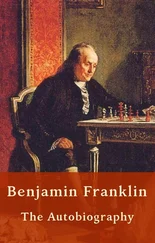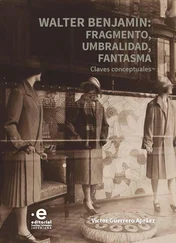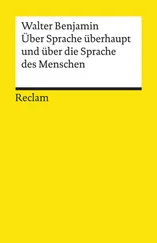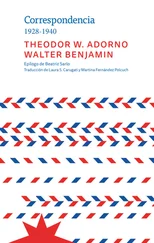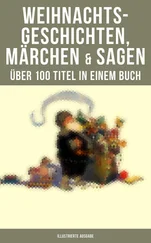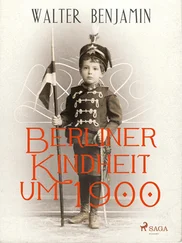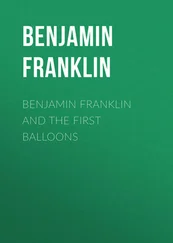Sixty are in every hour.
Fourteen-forty in a day.
Each one, son, provides some power
To achieve or flit away. 68
“Was die Deutschen lasen, wahrend ihre Klassiker schrieben,” GS, 4.2, 641–70. Translated by Diana K. Reese.
Broadcast on Radio Berlin, February 16, 1932, from 9:10–10:10 pm. Announced as part of the series “1789–1815” in the Funkstunde ( Schiller-Lerg, Walter Benjamin und der Rundfunk, 233).
In September 1932, the radio magazine Rufer und Hörer published an excerpted version of the text, which differs from the above version in that the excerpt contains simplifications as well as the “germanization” of foreign words (see GS, 4.2, 1054–71). Along with the excerpt, the magazine also published Benjamin’s programmatic statement, “Two Kinds of Popularity,” which can be found in this volume (369).
1Benjamin refers here to the Leipzig publishing house of Breitkopf, renowned for music and scholarly works on music, founded in 1719 by Bernhard Christoph Breitkopf. The Leipzig Book Fair rose to prominence in the eighteenth century to become Germany’s leading venue for the national and international book trade.
2Johann Friedrich Unger (1753–1804), German printer, bookseller, and publisher of authors including Goethe, Schiller, and the Schlegel brothers.
3Karl Philipp Moritz (1756–1793), German author of works including Versuch einer kleinen praktischen Kinderlogik [Logic for Children] (1786) and Anton Reiser (1785–1790); and August Wilhelm Iffland (1759–1814), German actor and dramatist.
4Johann Georg Heinzmann (1757–1802), conservative Swiss bookseller, publisher, and author of Appell an meine Nation: Über die Pest der deutschen Literatur [Appeal to my Nation: Concerning the Pestilence of German Literature] (Bern, 1795).
5Friedrich Schiller, Geschichte des Dreißigjährigen Krieges (1791–1793); Goethe, Leben des Benvenuto Cellini , (1803). The Göschen publishing house was a leading Leipzig printer and publisher, led by Georg Joachim Göschen, known for having published the first collection of Goethe’s writings.
6See Johann Peter Eckermann, Gespräch mit Eckermann in den letzen Jahren seines Lebens, ed. H. H. Houben (Leipzig: Brockhaus, 1910), 683.
7Rudolf Zacharias Becker, Noth- und Hülfsbüchlein für Bauersleute (Gotha, 1788). Becker (1751–1822) was a proponent of the “popular Enlightenment” ( Volksaufklärung ), which advocated social stability through the extension of liberal Enlightenment ideals and benefits to the peasants and lower classes. His advice book was one of the great commercial successes of his time.
8Johann Heinrich Pestalozzi (1746–1827), Swiss educational reformer.
9Friedrich Eberhard von Rochow, author of Der Kinderfreund (Frankfurt, 1776).
10Possibly Garlieb Helwig Merkel (1769–1850), Baltic German writer; Markus Herz (1747–1803), German Jewish physician, philosopher, student and correspondent of Kant, friend of Mendelssohn; and Friedrich Nicolai (1733–1811), polemical German writer, critic, bookseller, and publisher.
11From the Christmas hymn for children by Martin Luther, “Vom Himmel hoch,” translated by Catherine Winkworth, in Lyra Germanica: Hymns for the Sundays and Chief Festivals of the Christian Year (London: Longman, 1856), 12–14.
12The “Deputy Headmaster” is Karl Philipp Moritz, who worked for a time as an educator and schoolmaster in Berlin.
13Joachim Heinrich Campe (1746–1818) was a prominent pedagogue and one the editors of the Braunschweig Journal , which focused on issues related to education, individual and societal enlightenment, and reform. He was author of Robinson der Jüngere [Robinson the Younger, or the New Crusoe] (1779).
14Moritz describes the experience of participating in a poor schoolboys’ choir in Anton Reiser .
15Abraham a Santa Clara (1644–1709), ecclesiastical name of Johann Ulrich Megerle, Augustinian friar known for the popularity of his sermons.
16François Ambroise Didot, along with his two sons Pierre and Firmin, led a French typography and printing company after whom the font is named. In addition to being a publisher, Unger was, along with the Didots, a typographer interested in the production of new, hybrid, and more modern typefaces. After publishing Probe einer neuen Art deutscher Lettern, erfunden und in Stahl geschritten von JF Unger (1793), on reforming the typeface Fraktur, he created the new typeface Unger-Fraktur.
17The Berlinische Monatsscrift [Berlin Monthly], a journal known for featuring major debates of the German Enlightenment. It was published from 1783 to 1796 by Haude and Spener. Some editions of its first volume (January — June, 1783) list Unger as the publisher.
18 Das jüdische Großmütterchen oder Der schreckbare Geist der Frau im schwarzen Gewande (Prague: Widtmann, 1798).
19Franz Antonin Pabst, Der Nachtwächter oder Das Nachtlager der Geister bei Saatz in Böheim: Eine fürchterliche Sage aus den Zeiten des grauen Zauberalters (Prague, 1798).
20 Adelmar von Perlstein, der Ritter vom geldenen Schlüssel oder Die zwölf schlafenden Jungfrauen, die Beschützerinnen des bezaubernden Jünglings: Ritter- und Geistergeschichte aus dem Mittelalter als Seitenstück zu Ritter Edulf von Quarzfeld. For an illustration from this title, see Benjamin, “Dienstmädchenromane des Vorigen Jahrhunderts” and Figure 17, GS, 4.2, 620–2 (“Chambermaids’ Romances of the Past Century,” SW, 2, 226).
21Christian August Vulpius, Rinaldo Rinaldini der Räuberhauptmann (Leipzig: Wienbrack, 1798). Vulpius’s sister Christiane was married to Goethe.
22Christian Heinrich Spieß (1755–1799), popular writer primarily known for his romances, ghost stories, and robber fiction.
23See Christian Heinrich Spieß, Meine Reisen durch die Höhlen des Unglücks und Gemächer des Jammers (Frankfurt and Leipzig, 1797).
24See Christian Heinrich Spieß, Biographien der Wahnsinnigen (Leipzig: Voss, 1795–1796), 4 vols.
25See Spieß, Preface to Biographien der Wahnsinnigen, vol. 1, 3–4.
26Johann Kaspar Lavater (1741–1801), Swiss poet, mystic, and prominent Counter-Enlightenment Protestant figure known for his interest in physiognomy and the occult.
27Johann Kaspar Lavater, Sittenbüchlein für Kinder des Landvolks (Frankfurt: Kessler, 1789).
28See Moritz, Versuch einer Kleinen praktischen Kinderlogik (Berlin: Mylius, 1786).
29The Allgemeine Zeitung, a famous newspaper established by the eminent publishing house J. G. Cotta.
30August Friedrich von Kotzebue (1761–1819), German novelist and prolific playwright. His plays were once immensely popular.
31Franz Volkmar Reinhard (1753–1812), preacher at Dresden, influential German Protestant theologian.
32On July 9, 1788, King Frederick William II, under the influence of the recently appointed Minister of Ecclesiastical Affairs, Johann Wöllner, enacted the “Edict Concerning Religion.” It was followed on December 19, 1788 by the “Edict of Censorship,” which forbid the publication of books that were deemed to question religious orthodoxy.
33Kant published the first part of what would become Religion Within the Boundaries of Mere Reason [ Die Religion innerhalb der Grenzen der bloßen Vernunft ] in the Berlinische Monatsschift in April, 1792. Forbidden by the censors to publish its continuation, the magazine shifted publication to Jena.
34See Alexander von Humboldt: eine wissenschaftliche Biographie, ed. Karl Bruhns, vol. 1 (Leipzig: F. A. Brockhaus, 1872), 74; Life of Alexander Humboldt, trans. Jane and Caroline Lassell (London: Longmans, Green and Co., 1873), 63.
Читать дальше

